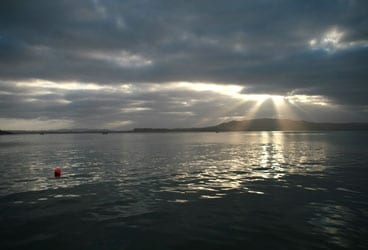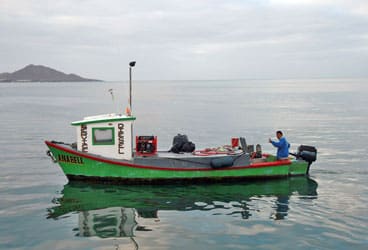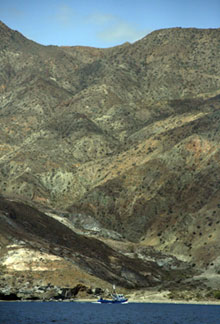
HW Baja 368
There’s a reason why they call it the Baja Bash and, in a very related development, why one sees no lack of sailboats-many of which are clearly there for the long haul-listing U.S. and Canadian hailing ports sprinkled in marinas all along the coast of Mexico and in anchorages up and down the length of the Sea of Cortez. The explanation is simple: Getting south from California, Washington, and British Columbia is relatively easy. Come springtime, bashing back home, particularly in the teeth of the prevailing northerly breeze, is not.
For the second time in two years, we discovered this fact the hard way.
In May 2008, we did just about everything wrong. Skipper Mark Schrader, mate Dave Logan, and I had just picked up a 64-foot steel cutter called Danzante that would soon be converted into an expedition-style vessel and renamed Ocean Watch for our expedition Around the Americas (www.aroundtheamericas.org). Only later did we learn that you never leave Cabo San Lucas in the afternoon if you’re attempting to negotiate Cabo Falso, just to the west (which we did), nor do you attempt to head offshore in the early going to cut down the mileage toward the first significant waypoint, Bahía Magdalena (ditto). The fillings in our teeth are still loose from that misadventure.

Herb McCormick| |At $2.90 a gallon, the fuel delivered by this Turtle Bay barge was the best price for the entire expedition.|
This time, with the Northwest Passage, Cape Horn, and over 25,000 nautical miles behind us, we at least knew enough to employ the time-tested strategy, as we made our way northward, leaving Cabo before daybreak and hugging the shoreline of Baja California. The northerly did indeed fill in after sunrise, but we still managed to get to Mag Bay in about half the time it took us in 2008.
We’d hoped to loll around in the big, wondrous bay for a couple of days, at least, but we were also trying to get to San Diego by a certain date. The breeze was stiff, at around 20 to 25 knots, but the forecast called for a significant increase in pressure, so we pushed on. Well, we pushed on for a while. But by the time we reached a small town called San Juanico, it was really pumping, gusting into the mid-30s and higher, so we ducked into the anchorage in the lee of the village to cut our losses. We’d hoped for a brief layover but ended up staying put for 30 hours. The bashing had begun.

Herb McCormick| |A fishing boat takes an inshore route before the dramatic Cedros Island backdrop.|
There was more of the same heading up to Bahía Tortugas, and we ended up pulling in at dawn to replenish the fuel supply, as we’d burned a significant amount of diesel motorsailing into the north wind. After the quick pit stop, we left in the company of nearly a dozen cruising boats. By the chatter on the VHF radio, it was apparent that they’d been there awhile, also hiding from weather. Clearly, on that flat-calm morning, a window had opened and they were anxious to get back on track. We were, too.
After months of voyaging and never seeing another sailboat, it was a novelty to cruise past Isla Cedros in the company of a small fleet of cruising yachts. And when we wrapped a big mess of polypropylene line around our prop, one of them came to our rescue. Our thanks to the crew of the PDQ 44 Indigo for the use of their diving hookah. Without it, we might be south of the border still.
We were all shellacked one more time by yet another rugged northerly blow before making it to San Diego. Bashed but not broken, it was very good to be back in the U.S.A.







